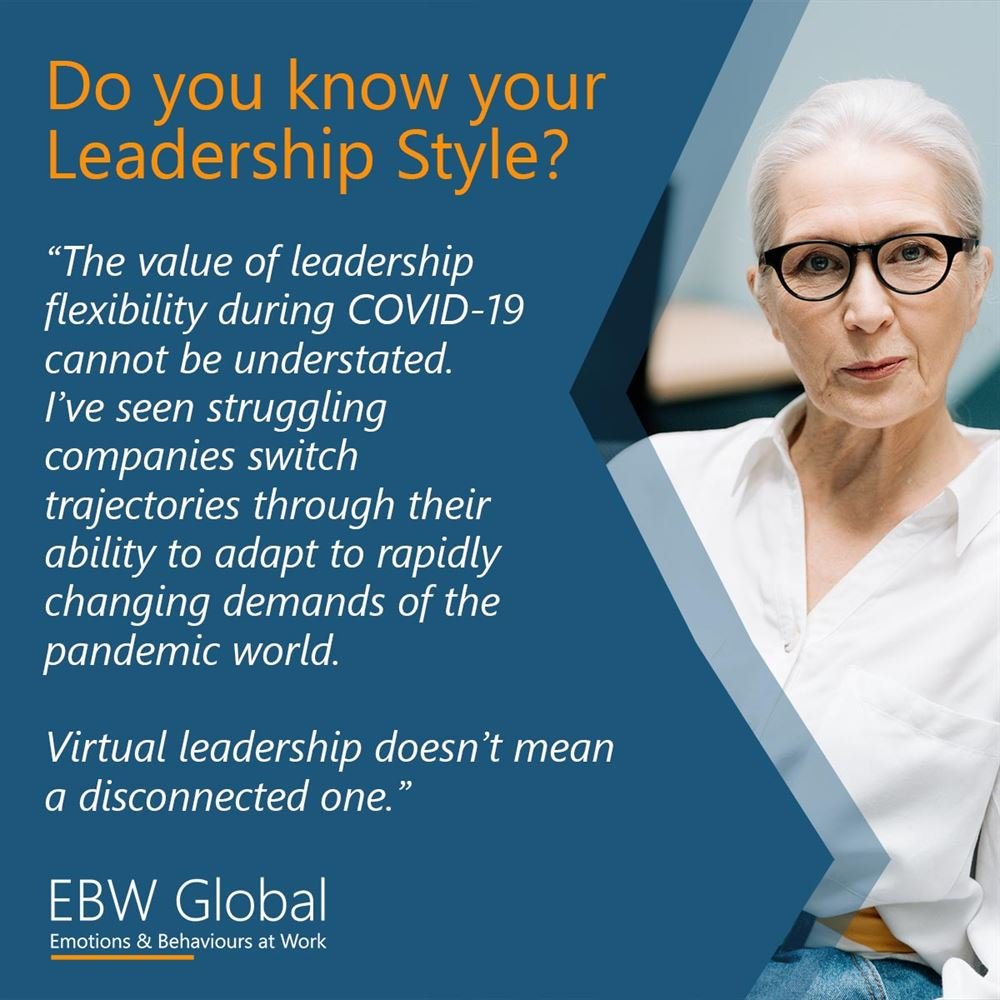Which Leadership Style Drives Results in 2025?
In 2025, one thing is abundantly clear at EBW Global: is that how leaders communicate matters just as much as what they decide.
As we navigate a hybrid world shaped as much by digital transformation as by human fragility, leaders are finding that their ability to empathise, connect, and communicate authentically has never mattered more.
From navigating workplace AI anxieties to managing teams across time zones, leaders who harness Emotional Intelligence are not only building resilient cultures - they’re driving performance and innovation.
Whether it’s a virtual one-to-one with a newly onboarded Gen Z employee or addressing organisational change in an era of “quiet quitting” and career realignment, how messages are delivered has a profound effect on how they’re received.
And the feedback from employees? Loud and clear:
Make us feel valued, safe and that our voices are heard.
This isn’t to say that all operational leaders and employees will crave security and understanding, or that there is a one-size-fits-all solution.
Some will need space or the expectation of results, others might seek long-term goal setting or rapid-fire short-term tasks.
The trick is knowing who will respond to what; and why.
This is not an easy task to achieve when communicating solely via email or video chats with one hundred other priorities fighting for your attention.
It is, however, one that can be made feasible and profitable by adapting leadership techniques on demand and taking the time to add another skillset to your professional arsenal.
"It is not the strongest or the most intelligent who will survive but those who can best manage change."
Charles Darwin
We find that a great starting point for leaders and managers is to think of leadership in terms of six main styles:
Above: The EBW Leadership Compass
1 - Visionary Leaders - Mobilizing people towards a vision. This style is great for when moving in a new direction; it may struggle when motivating highly experienced staff.
2 - Coaching Leaders – Developing people for the future. A style that works well when building up long-term capabilities, this is least effective when teammates are defiant and unwilling to learn.
3 - Affiliative Leaders – Creating emotional bonds and harmony. Not to be used exclusively, this can work well alongside visionary leadership and is used to best effect in times of stress or when building trust.
4 - Democratic Leaders – Building consensus through participation. Excellent for co-creation and inspiring collective ownership, this style may not be best suited for emergency situations or those requiring rapid decisions.
5 - Pacesetting Leaders – Expecting excellence and self-direction. Perfect for highly motivated and skilled teams, this can provide quick results, but suffers when people need extra guidance or lack drive.
6 - Commanding Leaders – Demanding immediate compliance. This style is most effective in times of crisis or when employees do not respond to other leadership styles. But it can stifle motivation innovation and flexibility.
Sustained uncertainty requires sustained adaptability.
In 2025, leaders aren’t just navigating a single crisis - they’re steering through a rolling sequence of shifts: AI disruption, shifting workforce expectations, and the long psychological shadow of the pandemic years.
In this kind of landscape, no single leadership style will do. Progress depends on leaders knowing how - and when - to switch gears.
The EBW Business EQ Assessment offers a framework not just for identifying leadership tendencies, but for equipping leaders with the agility to pivot between them. It’s not about choosing one style - it’s about mastering the art of repertoire.
The pandemic may be behind us, but its aftershocks are not. The so-called ‘new normal’ has already given way to a newer, messier, more hybrid reality - one in which stability is the exception, not the rule.
As this shifting terrain becomes the norm, the burden on leadership is evolving too. What distinguishes successful leaders now is their ability to adapt - to read the room, the moment, and the mood - and lead accordingly.
“The value of leadership flexibility in volatile times cannot be overstated. I’ve seen companies pivot dramatically - not through grand strategy, but through leaders who could shift their approach to meet changing demands. Virtual leadership doesn’t mean a disconnected one.”
EBW Global Senior Partner, Stephen Walker
Discover How Business Emotional Intelligence Transforms Leaders and Teams
If you would you like your leaders and teams to improve their decisions and the way they work together, click a button below to see how investing in Business Emotional Intelligence can make a difference or find an EBW Certified Partner to help you.


